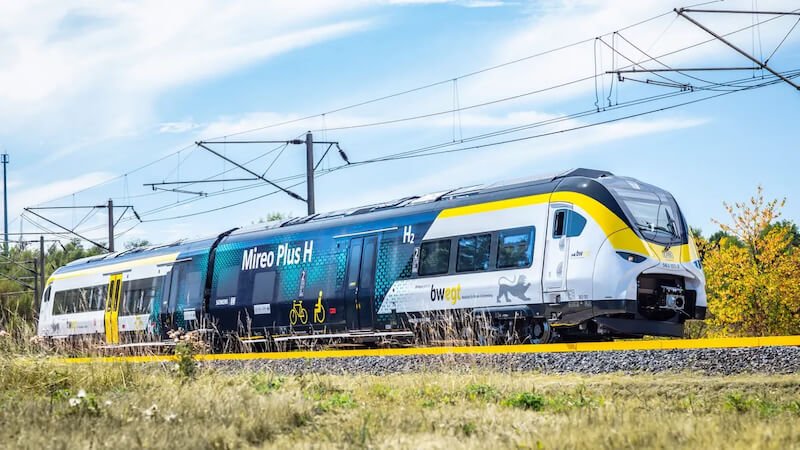
Bavaria and Baden-Württemberg will rely on hydrogen trains in the future. They are intended to replace existing diesel trains. The Mireo Plus H hydrogen train from Siemens promises a range of up to 600 kilometers.
The transport transition poses numerous challenges. This applies to both the electrification of road transport and sustainable rail transport. Currently, just over 60 percent of all train connections within Germany are equipped with overhead lines.
Conversely, this means that older and inefficient diesel trains are often used on around 13,000 kilometers of route. Since the complete electrification of the rail network may still take some time, Deutsche Bahn is therefore relying on alternatives.
The company is already using Mireo Plus B battery-powered trains on some routes. Lower Saxony, for example, is relying on the technology because it is relatively inexpensive and at the same time enables climate-neutral operation.
Mireo Plus H: Hydrogen train based on fuel cells and batteries
Bavaria and Baden-Württemberg would still like to use hydrogen as an alternative power source. Siemens recently introduced the Mireo Plus H, the first generation of hydrogen trains. According to the manufacturer, the entire train has an output of 1.7 megawatts and reaches speeds of up to 160 kilometers per hour.
The hydrogen technology is located on the roof of the train. Hydrogen tanks and the necessary fuel cells are located where the pantograph is located in classic railcars. Each cell delivers an output of 200 kilowatts. You get support from lithium titanate batteries in the floor of the train.
Mireo Plus H has a range of around 600 kilometers
While the batteries charge through recuperation during braking and via the cells, the railway needs the appropriate charging infrastructure for its hydrogen trains. The Mireo Plus H needs a break approximately every 600 kilometers. A mobile filling system will then completely refill the tanks within 15 minutes.
The system obtains the necessary hydrogen from an electrolysis unit that produces hydrogen directly on site. The railway takes advantage of the quiet times at night and draws electricity directly from its own system. The system produces 200 kilograms of hydrogen every day; the train needs around 80 kilograms daily. The advantage: the storage tank and tank system fit into a truck trailer and can therefore be transported flexibly to any location.
Also interesting:
Source: https://www.basicthinking.de/blog/2023/08/28/wasserstoffzug-bayern-baden-wuerttemberg/


